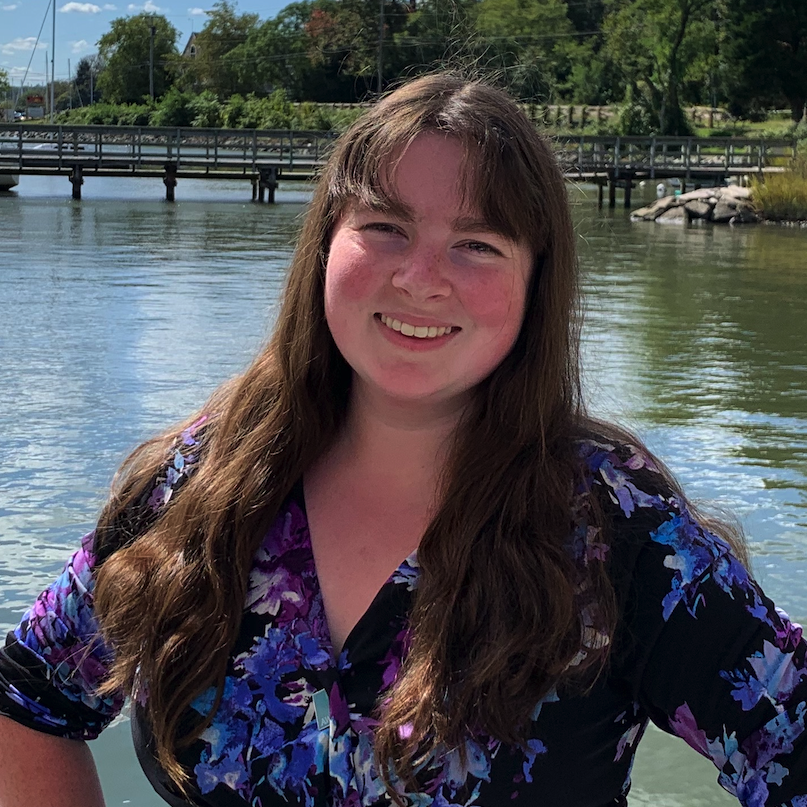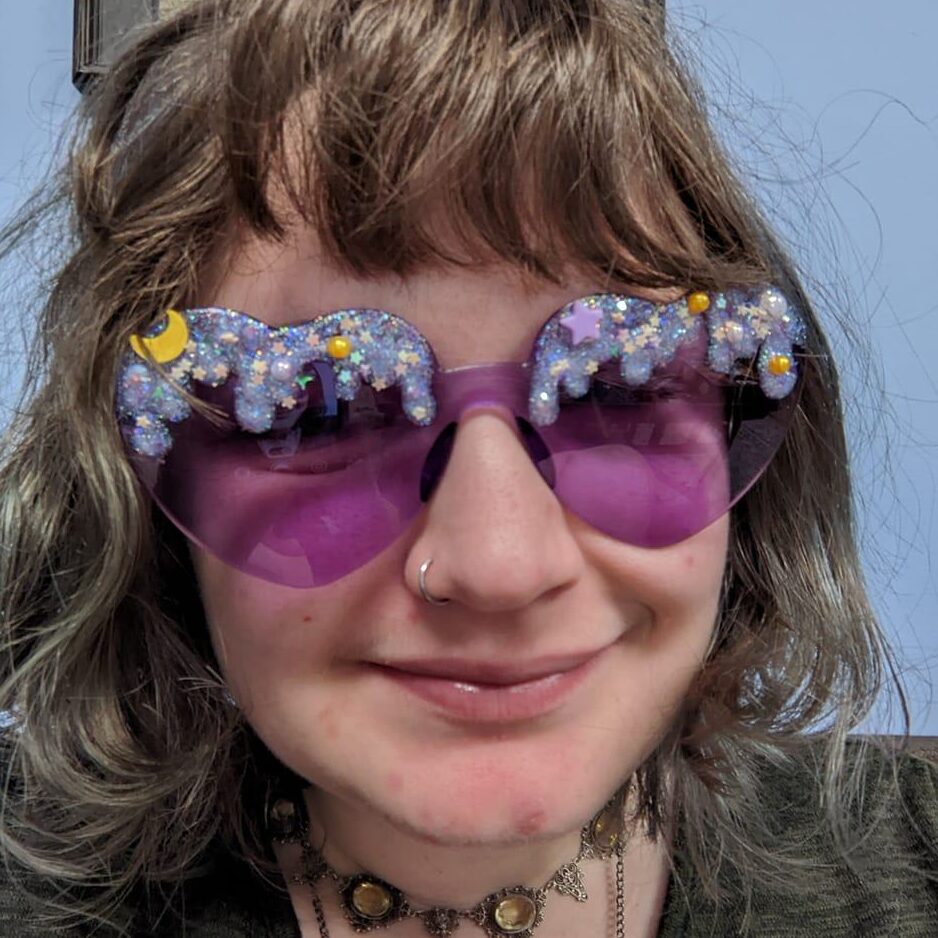Neurodivergent, sock-collecting Vee is stuck with her uptight and “perfect” Grandma Jojo, who she has absolutely nothing in common with, for the whole summer. To make matters worse, Vee thought her older cousin Cat would make summer fun again – until an incident happens in the middle of the night. And Cat hasn’t been seen since.
Then Vee discovers a ghost living in Jojo’s walls. And this girl – this ghost – has been collecting Jojo’s secrets. At first, Vee finds the ghost to be an escape from her grandmother and her memories of the incident with Cat. But as the girl encourages Vee to get back at Jojo by playing pranks, Vee soon uncovers Jojo’s insecurities. And Vee starts to think twice about taking part in the girl’s schemes, until the girl suddenly becomes dangerous, trapping Vee in the walls and threatening to flood the house and everyone in it. Will Vee let grief and anger take control — or is there a way to use even the broken, confusing pieces of her feelings to save her messy family?
We spoke with author, Meg Eden Kuyatt, about her upcoming book, The Girl in the Walls. With us, she shared a little about writing for a middle grade audience, the generational trauma of neurodivergence, and books with autism representation.
Firstly, what drew you to write for a middle grade audience? Does it come with particular challenges and rewards?
It wasn’t exactly a conscious choice — Good Different popped out of me and it was clear it wasn’t YA, which is what I was trying to write at the time. Now, I’m drawn to it for the very same reason I feared it. The idea of reliving middle grade years, especially that 10-12 spot, never sounded appealing. Those were awful, vulnerable years!
But now I get to be a magician with that time. I go back, but I can play. I can ask: what if? I can make different things happen. And when I’m at a school visit, in a room of kids this age, I just instantly fall back into being a kid. I feel like I’ve found the people I longed for at that age, only now I can talk about my special interests and insecurities and joys with confidence. It’s a great feeling! Author Gennifer Choldenko describes being a middle grade writer as being “a professional twelve-year old,” and honestly, I think I’m really good at — and enjoy — holding onto the things I loved about that age, with some of the confidence of getting older.
In The Girl in the Walls, your protagonist, V, is autistic. You mentioned writing from your own experience as an autistic person. In The Girl in the Walls, how do you explore V’s neurodivergence?
I was really interested in the generational trauma of neurodivergence. The things I struggle with in a neurotypical world, how did my ancestors navigate that? What lies were they told, and what harmful mechanisms of masking did they take on for themselves, and then pass onto their children? What legacies of masking do we still carry, and what do we need to do to break harmful cycles?
V on her own loves being neurodivergent, but her Grandma Jojo stifles her neurodivergent joy, and hurts her in such a way that she second-guesses herself. In her journey, she has to figure out how to return back to that joy, and perhaps find out that Jojo’s a little more complex than she expected — and maybe their brains have more in common than she might’ve imagined.
You previously published Good Different, which is also a middle grade book about a neurodivergent girl. How would you compare and contrast what audiences can find in Good Different versus The Girl in the Walls?
Good Different is a lot more about identifying your individual needs, seeking a diagnosis and self-advocating. There are struggles, but also empowerment and joy. It’s also very real-world grounded, and more about going from masking to joy.
The Girl in the Walls is more about the post-diagnosis challenges, of having joy in who you are, but losing sight of that in doubts and hurt from others. It’s about messy families and neurodivergent trauma and the things we carry that we have to figure out how to find healing from. This one’s a bit darker than Good Different, but also has a magical twist with this world of ghost girls and sludge and magical rooms behind the walls of a family house. It’s a bit spookier, too.
Both stories are important parts of the neurodivergent experience. I don’t want the story to end with Good Different — I don’t want people to just slap an “autism is a superpower!” sticker on their kid and say we’ve solved ableism, which I worry sometimes is what people well-meaningly but misguidedly take from this book. Being autistic is a double-edged sword, and there’s a legacy here, often baggage, that we’re carrying and don’t always know we’re carrying. I think it’s important to get into the messy, the hurt, and to fight for healing and reconciliation whenever possible. I think we have to acknowledge we haven’t solved ableism yet, and there are still lots of problematic views on disability and neurodivergence. We still have a ways to go, but we can all be a part of making things better.
Besides middle grade fiction, you also publish poetry. Your poetry collection, Obsolete Hill, is coming out in spring of 2026. Could you share a bit about the themes your poetry explores?
Obsolete Hill, the title, comes from the literal translation of the Japanese word “haikyo,” meaning sort of modern-day ruins. These poems started as literal reflections of these modern-day ruins, and exploring how these remind me of the fleeting nature of our time on earth, but also how nature persists. But in the process, this collection also expanded on this definition of “ruin.” As an autistic person, I started to explore how being in a hustle, able-bodied, neurotypical culture, I can feel like a ruin of a person, unable to keep up with the “typical” standards and expectations of work and life. How in our culture, it’s so easy to root our identity in productivity, but when you can’t keep up with the pace, when your body and mind reject this pace, you have to redefine identity and reconcile with limitations, and maybe interrogate what it really means to be a ruin — and perhaps, isn’t there another life in these incredible places? Are they truly in “ruin” or repurposed into a different, incredible life?
Are there other books with autistic representation that you’d recommend?
Yes, yes, yes! Just a few that I particularly love:
- Flap your Hands: A Celebration of Stimming by Steve Asbell
- Bitsy Bat, School Star by Kaz Windness
- The Infinity Rainbow Club Series by Jen Malia
- The Fire, the Water and Maudie McGinn by Sally Pla
- Show Us Who You Are by Elle McNicoll
- All the Noise at Once by DeAndra Davis


